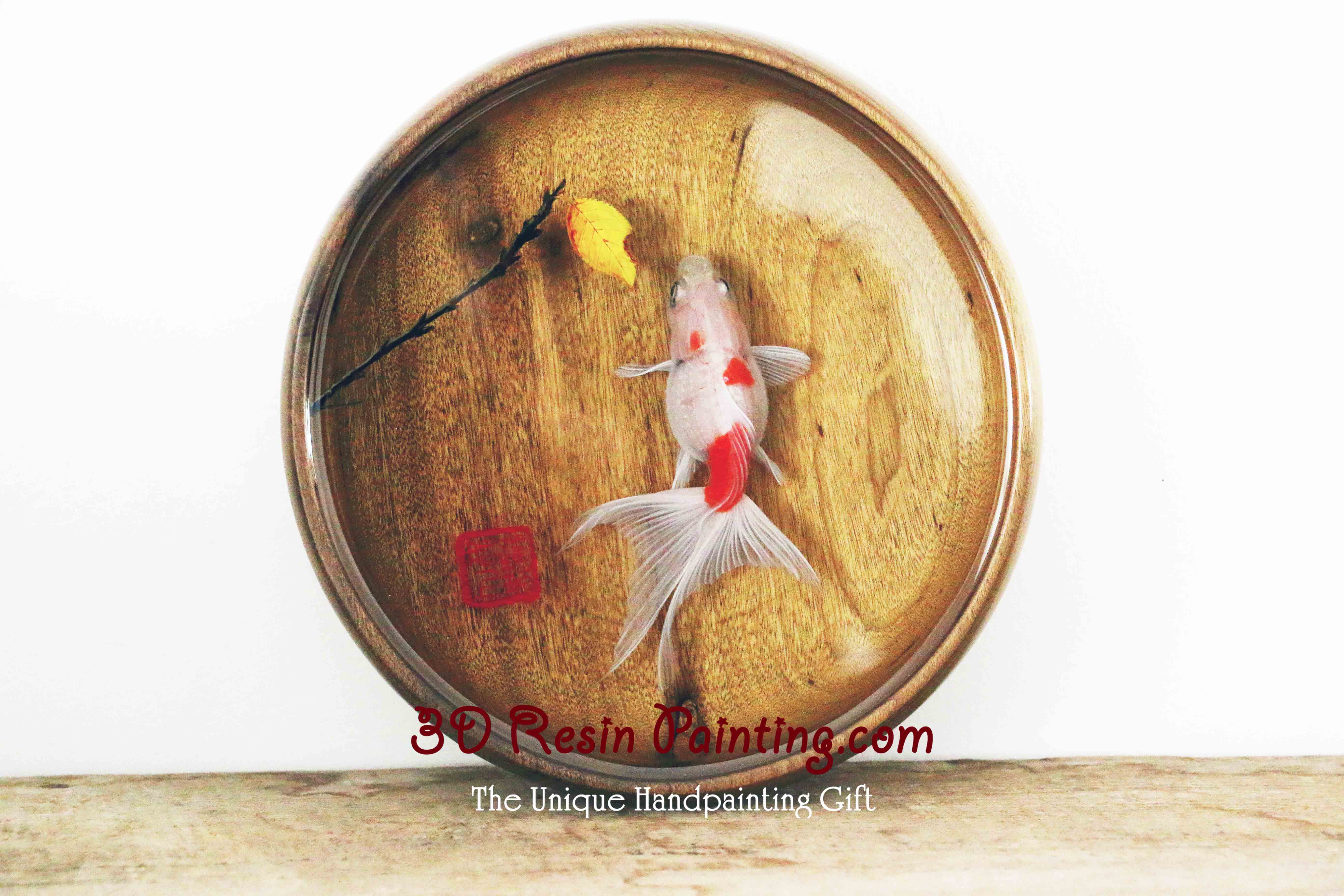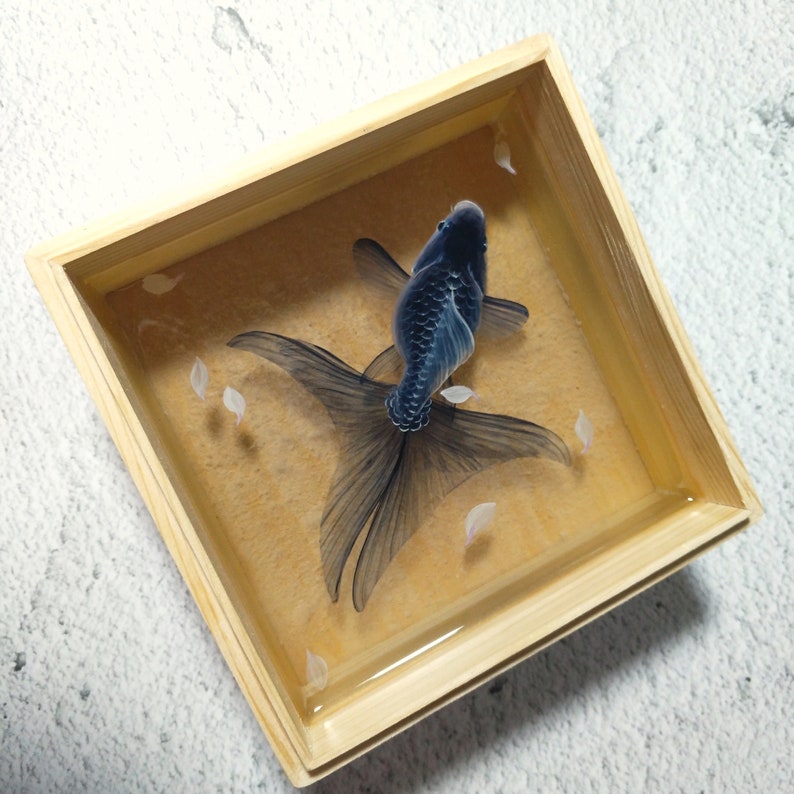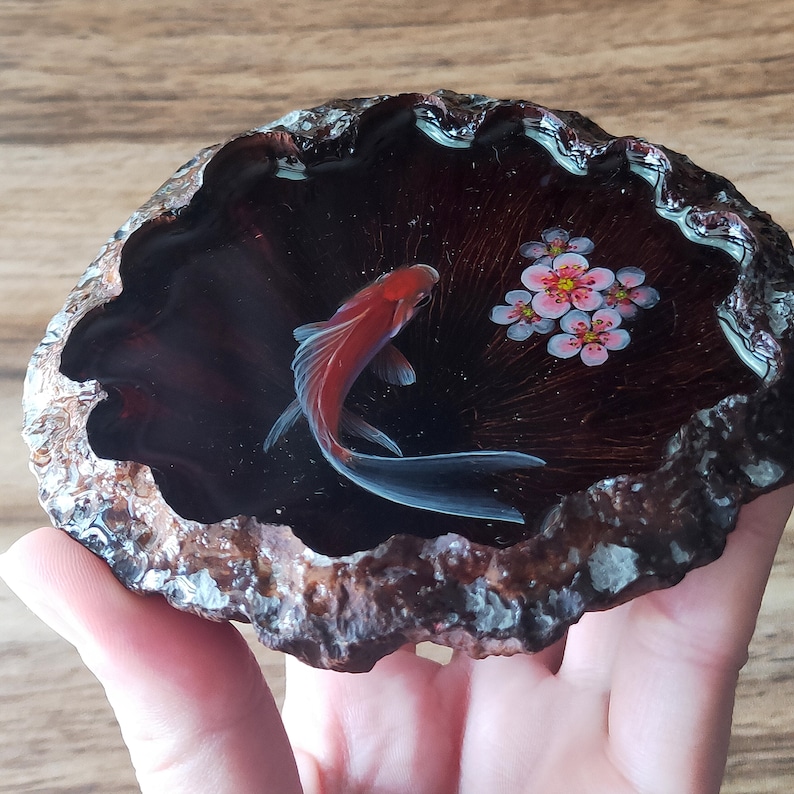

Dust, hair, and fibers are SO annoying in this process, and aside from some sort of lab environment, it's pretty much impossible to keep them out of the resin entirely. While shining a light over your piece to look for bubbles, you might notice some flecks and fibers on the surface of your piece already. Shine a light over your piece and see if there bubbles casting shadows. Most of the big bubbles will pop pretty quick (which is pretty satisfying to watch), but look out for those little guys. (Pro-tip: flush the dust out of your heat gun by turning it on and blowing it elsewhere before you use it on your piece.) Do not linger on one area too long, because you risk burning or scarring the resin. Use your heat gun on the low setting and move it over your piece. You can tilt the piece so the resin coats the walls of the interior if you want- this will make it easy to scrape any errant paint off the sides that might get there by accident, while paint would be harder to remove from uncoated wood.

Tilt your piece from side to side until the bottom of the surface is covered completely. Dust will get in your piece, but we'll cover how to deal with that in the next step. You'll want to do these next steps in a relatively dust and hair free environment. Your solution should look fairly homogenous after mixing (there will be a lot of bubbles in it at this point).

Since it's pretty viscous, make sure to scrape the sides and reach all the places where unmixed resin could hide. Pour an equal amount of Part A and Part B into your graduated measuring cup- the ratio of Part A to Part B is 1:1 with this particular brand of resin.


 0 kommentar(er)
0 kommentar(er)
